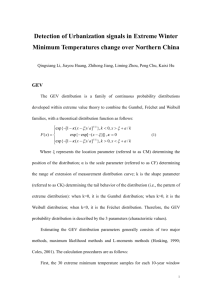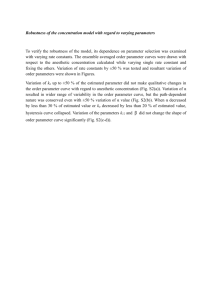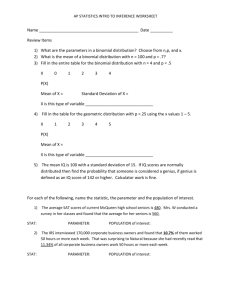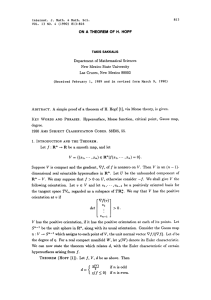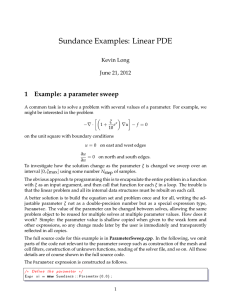Random Fields II Exercise Sheet 1
advertisement
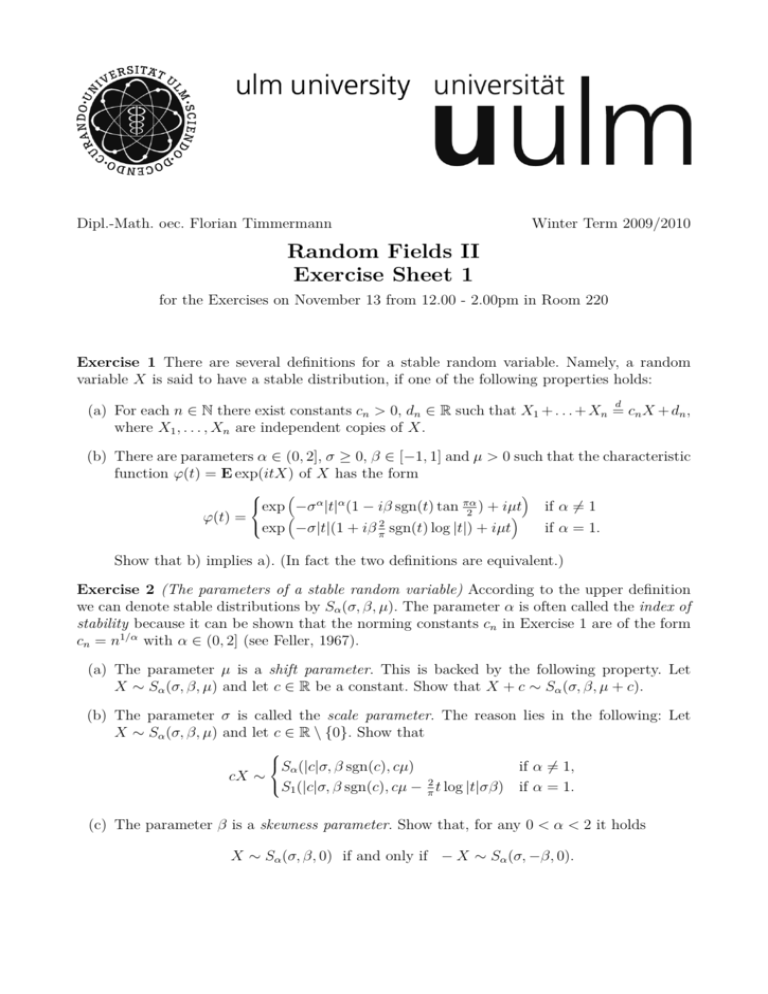
Dipl.-Math. oec. Florian Timmermann
Winter Term 2009/2010
Random Fields II
Exercise Sheet 1
for the Exercises on November 13 from 12.00 - 2.00pm in Room 220
Exercise 1 There are several definitions for a stable random variable. Namely, a random
variable X is said to have a stable distribution, if one of the following properties holds:
d
(a) For each n ∈ N there exist constants cn > 0, dn ∈ R such that X1 + . . . + Xn = cn X + dn ,
where X1 , . . . , Xn are independent copies of X.
(b) There are parameters α ∈ (0, 2], σ ≥ 0, β ∈ [−1, 1] and µ > 0 such that the characteristic
function ϕ(t) = E exp(itX) of X has the form
ϕ(t) =
exp −σ α |t|α (1 − iβ sgn(t) tan πα ) + iµt
2
exp −σ|t|(1 + iβ 2 sgn(t) log |t|) + iµt
π
if α 6= 1
if α = 1.
Show that b) implies a). (In fact the two definitions are equivalent.)
Exercise 2 (The parameters of a stable random variable) According to the upper definition
we can denote stable distributions by Sα (σ, β, µ). The parameter α is often called the index of
stability because it can be shown that the norming constants cn in Exercise 1 are of the form
cn = n1/α with α ∈ (0, 2] (see Feller, 1967).
(a) The parameter µ is a shift parameter. This is backed by the following property. Let
X ∼ Sα (σ, β, µ) and let c ∈ R be a constant. Show that X + c ∼ Sα (σ, β, µ + c).
(b) The parameter σ is called the scale parameter. The reason lies in the following: Let
X ∼ Sα (σ, β, µ) and let c ∈ R \ {0}. Show that
cX ∼
S
α (|c|σ, β
sgn(c), cµ)
S1 (|c|σ, β sgn(c), cµ − 2 t log |t|σβ)
π
if α 6= 1,
if α = 1.
(c) The parameter β is a skewness parameter. Show that, for any 0 < α < 2 it holds
X ∼ Sα (σ, β, 0) if and only if − X ∼ Sα (σ, −β, 0).
Exercise 3
(a) Show that X ∼ Sα (σ, β, µ) is symmetric about zero if and only if β = 0 and µ = 0.
(b) Show that the random variable X ∼ N (µ, σ 2 ) is stable with α = 1/2.
(c) Show that the Cauchy random variable X with probability density function fX (x) =
γ
, γ > 0 is stable. What is the value of α?
π(x2 +γ 2 )
Exercise 4
(a) Find a simple formula for the variogram γ(s, t) of a random field X = {X(t), t ∈ Rd }
with mean value function µ(t) and covariance function C(s, t), s, t ∈ Rd , d ≥ 1.
(b) Now assume that X, defined on a compact T ⊂ Rd and diam T := sups,t∈Rd d(s, t) < ∞
q
with the canonical pseudo-metric d(s, t) := 2γ(s, t) < ∞. The smoothness of the
random field X is closely related to the behaviour of γ(s, t) for points s, t ∈ Rd with infinitesimal small distance. We now try to find a sufficient condition for the a.s. continuity
of the field X. It is known that Gaussian random fields are a.s. continuous and bounded
with probability one if there exists a δ > 0 such that
Z δq
− log u dp(u) < ∞,
0
where p2 (u) = sup|s−t|≤u 2γ(s, t). Show that the existence of a constant K ∈ (0, ∞) such
that for all α, η > 0 with |s − t| < η it holds
γ(s, t) ≤
K
| log |s − t||1+α
is a sufficient condition for the a.s. continuity of X.



